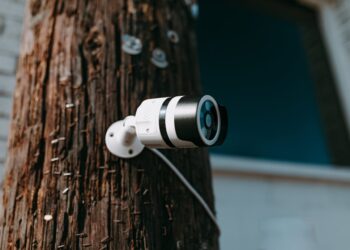Household water leaks might seem like minor nuisances, but the potential for significant repercussions lies beneath their seemingly innocent appearance. Here’s a look at how these inconspicuous drips can escalate into full-blown disasters. This article will also look at why you should contact professionals like https://leakdetectiontulsa.com/contact-us/ to detect leaks that can wreak havoc on your home and well-being.
Types of Household Water Leaks
Faucet Drips: The persistent drip-drip of a leaky faucet might not appear concerning at first, but over time, it can lead to a surprising amount of water wastage. These seemingly harmless droplets accumulate and contribute to increased water bills.
Under-the-Sink Leaks: Leaks occurring under sinks often go unnoticed until the damage is substantial. These leaks can damage cabinetry, encourage mold growth, and even compromise the structural integrity of the surrounding area.
Toilet Leaks: A silent toilet leak can waste gallons of water daily. The continuous flow of water from a malfunctioning flapper valve or faulty flush handle can inflate your water bill while slowly damaging the toilet and surrounding flooring.
Slab Leaks: Hidden beneath your home’s foundation, slab leaks are among the most insidious. These leaks occur in the pipes running beneath your concrete foundation and can accumulate moisture, causing cracks, undermining the foundation’s stability, and promoting mold growth.
The Ripple Effects of Water Leaks
Structural Damage: What starts as a drip can escalate into structural problems. Water can seep into walls, weakening the integrity of drywall and causing it to crumble. This can lead to expensive repairs and also compromise the structure’s overall stability.
Mold and Mildew Growth: The combination of moisture and darkness in concealed areas makes an ideal breeding ground for mold and mildew. These unwelcome guests damage surfaces and pose health risks to occupants, particularly those with allergies or respiratory conditions.
Flooring Woes: From hardwood to carpets, flooring materials are vulnerable to water damage. Leaks can cause wood to warp, carpets to become musty, and tiles to loosen. Repairs or replacements can be costly and disrupt daily life.
The Costly Consequences
Increased Utility Bills: One of the most immediate impacts of water leaks is a surge in utility bills. The constant dripping or flow of water adds up over time, leading to unnecessarily high expenses.
Wasted Resources: Beyond the financial burden, the wastage of water resources is an environmental concern. With water becoming a scarce commodity in many regions, letting leaks go unchecked contributes to unnecessary strain on local water supplies.
Energy Expenditure: Water heaters working overtime to provide hot water for leaking fixtures consume more energy than necessary, increasing energy bills.
Early Detection and Prevention
Routine Inspections: Regularly inspect your home for signs of leaks, such as damp spots, discoloration, or musty odors. Address even the smallest drips promptly.
Upgrade Fixtures: Invest in modern, water-efficient fixtures that are less likely to develop leaks. These fixtures help conserve water and reduce the risk of leaks.
Monitor Water Usage: Make sure to keep track of your water consumption. A sudden spike in usage could indicate an unnoticed leak.
Conclusion
In the world of household maintenance, the phrase “out of sight, out of mind” can be a costly mindset to adopt. From a simple faucet drip to hidden under-the-sink leaks, water-related issues can gradually evolve into disastrous situations. Structural damage, mold growth, and escalated utility bills are just a few of the potential consequences. By staying vigilant, addressing leaks promptly, and embracing water-efficient solutions, you can safeguard your home, your wallet, and the environment from the escalating impact of household water leaks.







